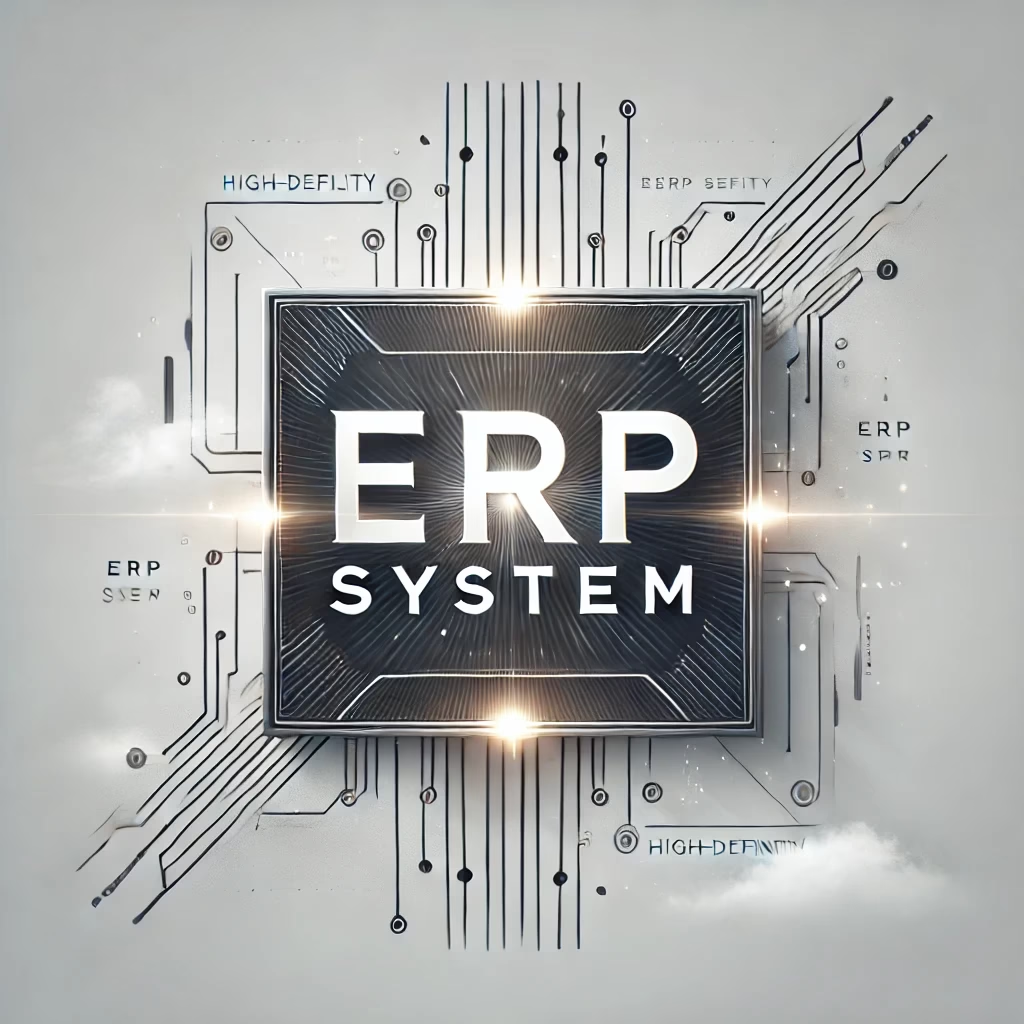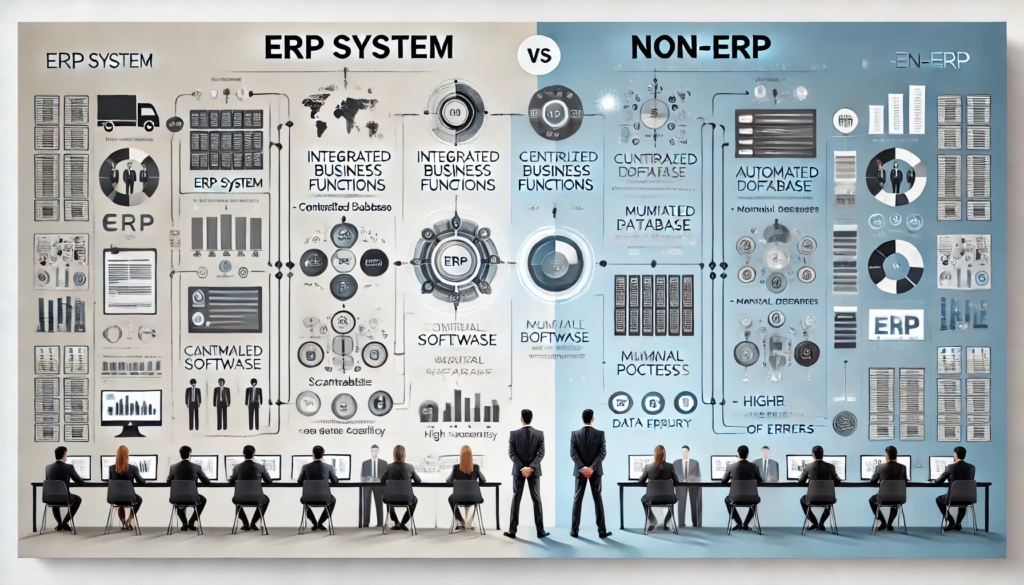ERP stands for Enterprise Resource Planning. ERP System is a software that helps us to manage the enterprise's resources and improves their productivity and efficiency, It is also called the company's central nervous system because it manages and integrates every part of the company.

In an organization, so many different departments are there like- the sales department, purchase department, production department, finance department, and many more. ERP software controls all the departments of the company. It also tracks and manages real-time information about the company.
Table of Contents
History of ERP System
Early ERP System:
1st ERP System was developed in 1960. that ERP software is only used for inventory control. These software are designed to automate the inventory process. The early ERP software had so many limitations that’s why a new ERP software was developed with some changes.

MRP AND MRP 2:
MRP stands for Material Requirement Planning. This system was developed in 1970. It was the expansion of the early ERP software. This ERP software was designed to plan and schedule production based on inventory levels.
Later, MRP 2 was developed. This ERP software provides more features like- financial management and human resources.
ERP 1.0:
This ERP software was developed in the 1990s. this ERP software integrated all core business processes like- finance, human resources, manufacturing, and supply chain management into a single platform.
SAP and ORACLE were major player in that era.
Cloud-based ERP:
This ERP software was developed in the 2000 era. This cloud-based ERP software has so many advantages like- easy accessibility, scalability, and cost-effectiveness. This helps the company to grow in so many ways.
ERP 2.0:
This was developed in 2010. This ERP software is more intelligent, user-friendly, and flexible than ever before. ERP 2.0 can integrate with another system like- CRM (Customer Relationship Management) and provide a complete solution for the business.
These are all the history or evolution of ERP. It all started with inventory management and now this transformed in a way that a business is impossible to run without ERP software. With more advanced features, ERP software continues to play a crucial role in the growth of the business.
Difference Between ERP and Non ERP System
Definition
ERP systems are comprehensive software solutions designed to integrate and manage various business processes across an organization, including finance, accounting, human resources, supply chain management, manufacturing, and customer relationship management. WHILE Non-ERP systems are standalone applications or modules that focus on specific business functions, such as accounting software, CRM, or HR software.

Benefits
Implementing ERP software can lead to significant improvements in efficiency, accuracy, and decision-making, ultimately boosting profitability. whereas non-ERP software can be useful for managing specific business processes, but it may not provide the same level of integration and efficiency as ERP software.
Cover-up
In a company, ERP software covers so many features like accounting, sales, inventory management, and HR. while non-ERP software focuses only single area like accounting or customer relationship management.
Need or Depend
In a company under ERP software, all departments are connected to a single database ie. all applications are within one ERP software. while a company that is adopting the non-ERP software, they needs different types of applications for each department.
Accessibility
One ERP software can be accessed in different departments. where one no-ERP software can not access different departments.
Decision Making
A company that is adopting an ERP system can make better decisions or we can say under an ERP system there is a better decision-making process based on real-time data insights. whereas non-ERP systems might lack comprehensive data for accurate analysis.
Advantages of ERP
Cost Savings
One of the best advantages of adopting an ERP system is cost savings. An ERP system can reduce or even wipe out many administrative and operational costs. Manual data entry or processes that require long paper trails, and that expenses a lot. Now with the help of ERP software, we can easily reduce costs.
Batter Decision Making
Under the ERP system, there is a better decision-making process based on real-time data insights.

Mobility
Today’s ERP systems are mobile-friendly. Employees have become very comfortable using smartphones and tablets instead of computers to complete many tasks and in light of that trend. For some companies, mobility is not just a nice-to-have but a need-to-have. employees can also take care of critical tasks like approvals and monitoring cash flow (AR and AP) when they have a mobile-friendly ERP solution.
Improved customer relationships
ERP system helps track, report, and analyze customer interactions. this caused a better relationship between the company and its customers.
Read more blogs related to this and many more interesting topics related to sap
What is sap erp?
